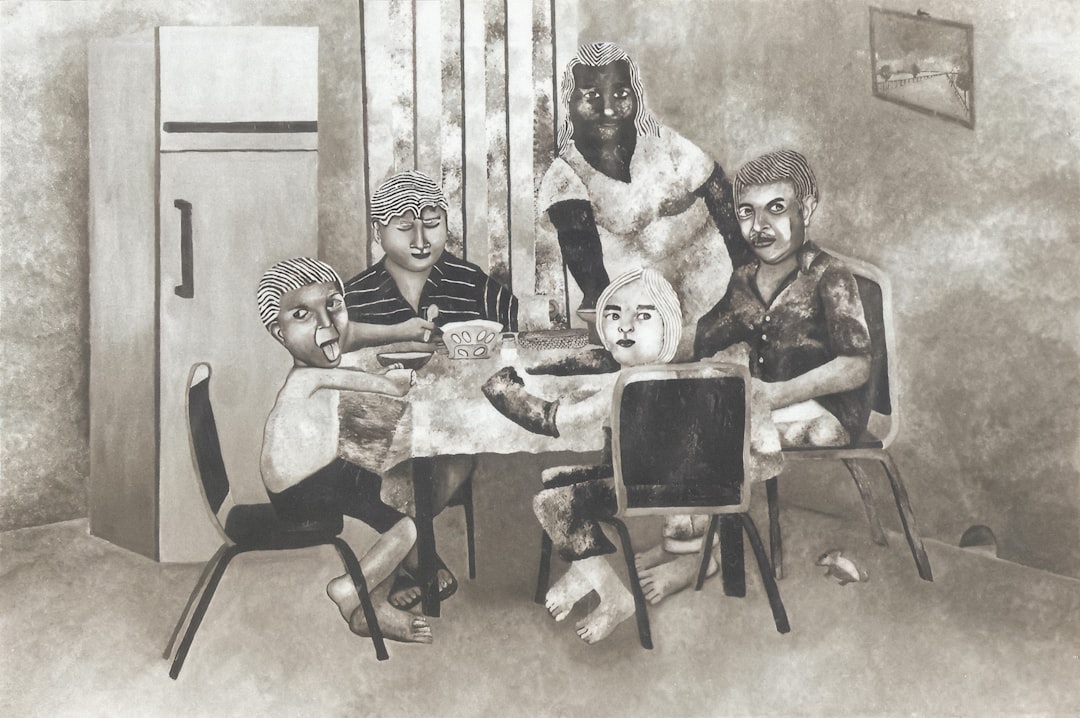The capture of Saddam Hussein on December 13, 2003, marked a pivotal moment in both Iraqi and global history. After years of evading coalition forces, the former Iraqi president was found hiding in a small underground hideout near his hometown of Tikrit. This event not only symbolized the culmination of a relentless pursuit but also served as a significant turning point in the ongoing conflict in Iraq.
S. troops, were broadcast around the world, signaling the end of an era characterized by his oppressive rule. Hussein’s capture was celebrated by many as a victory for justice and a step toward restoring stability in Iraq.
For the Iraqi people, it represented a chance to break free from decades of tyranny and fear. The moment was laden with hope, as citizens envisioned a future where they could rebuild their nation without the shadow of a dictator looming over them. However, the complexities of the situation were far from straightforward, as the aftermath of his capture would reveal deep-seated divisions within Iraqi society and the challenges of establishing a new political order.
Key Takeaways
- The capture of Saddam Hussein marked a historic moment in the Iraq War, symbolizing a major victory for the coalition forces.
- The hunt for Saddam Hussein spanned over a decade, showcasing the determination and persistence of the coalition forces in bringing him to justice.
- Saddam Hussein’s capture had a significant impact on Iraq and the Middle East, leading to a shift in power dynamics and the beginning of a new era for the region.
- Saddam Hussein’s reign was characterized by a brutal regime, marked by human rights abuses, suppression of dissent, and widespread violence.
- The capture of Saddam Hussein served as a turning point in the Iraq War, leading to a shift in the dynamics of the conflict and the eventual downfall of his regime.
The Hunt for Saddam Hussein: A Decade-Long Pursuit
The hunt for Saddam Hussein was a protracted and arduous endeavor that spanned nearly a decade. Following the U.S.-led invasion of Iraq in 2003, coalition forces launched an extensive search for the elusive dictator. Intelligence reports, tips from locals, and high-tech surveillance were all employed in an effort to locate him.
The pursuit became emblematic of the broader struggle to dismantle Hussein’s regime and stabilize Iraq amidst rising insurgency and sectarian violence. As time passed, the search for Hussein became increasingly complex. His ability to evade capture was attributed to a network of loyalists who provided him with resources and support.
The former president’s cunning tactics, including changing locations frequently and utilizing underground hideouts, made him a ghost in the eyes of his pursuers. Despite the challenges, the determination of coalition forces never waned, culminating in a series of operations that ultimately led to his discovery in a rural farmhouse.
The Impact of Saddam Hussein’s Capture on Iraq and the Middle East

Saddam Hussein’s capture had profound implications for Iraq and the broader Middle East region. Initially, it was seen as a potential catalyst for peace and stability in Iraq, as many believed that his removal would pave the way for democratic governance and national reconciliation. However, the reality proved to be more complicated.
The power vacuum left by Hussein’s absence exacerbated existing tensions among various ethnic and sectarian groups, leading to increased violence and instability. In the wider context of the Middle East, Hussein’s capture sent ripples through neighboring countries. It raised questions about the future of authoritarian regimes in the region and inspired both hope and fear among various factions.
While some viewed it as an opportunity for democratic reform, others feared that it could lead to chaos and further conflict. The geopolitical landscape shifted as nations grappled with the implications of a post-Hussein Iraq, influencing foreign policy decisions and regional alliances for years to come.
Saddam Hussein’s Reign: A Brutal Regime
| Metrics | Data |
|---|---|
| Number of Executions | Estimated 250,000 |
| Number of Disappearances | Unknown, but estimated in the tens of thousands |
| Number of Torture Victims | Countless, exact number unknown |
| Estimated War Casualties | Over 1 million |
| Years in Power | 1979-2003 |
Saddam Hussein’s reign over Iraq was marked by brutality and oppression. Ascending to power in 1979, he established a regime characterized by widespread human rights abuses, including torture, extrajudicial killings, and mass executions. His rule was defined by a cult of personality that glorified his image while instilling fear in the hearts of those who opposed him.
The Ba’ath Party’s grip on power was maintained through violence and intimidation, creating an atmosphere where dissent was met with swift retribution. Hussein’s aggressive policies extended beyond domestic repression; he engaged in costly wars that devastated Iraq’s economy and infrastructure. The Iran-Iraq War (1980-1988) drained resources and resulted in countless casualties, while his invasion of Kuwait in 1990 led to international condemnation and military intervention.
These actions not only solidified his reputation as a tyrant but also set the stage for his eventual downfall. The legacy of his brutal regime left deep scars on Iraqi society, complicating efforts for reconciliation in the years following his capture.
Saddam Hussein’s Capture: A Turning Point in the Iraq War
The capture of Saddam Hussein is often regarded as a turning point in the Iraq War. Initially celebrated as a significant achievement by coalition forces, it was hoped that his arrest would lead to a decrease in violence and insurgency. However, this optimism quickly gave way to disillusionment as sectarian tensions escalated and insurgent groups gained momentum.
The power dynamics within Iraq shifted dramatically after Hussein’s capture, revealing the fragility of the political landscape. In many ways, Hussein’s arrest became a rallying point for insurgents who sought to exploit the chaos that followed. Rather than quelling resistance, his capture ignited further conflict as various factions vied for power in the absence of a unifying figure.
The ensuing years saw an increase in attacks against coalition forces and Iraqi civilians alike, underscoring the complexities of post-Hussein governance. The initial euphoria surrounding his capture faded as it became clear that removing a dictator did not automatically translate into stability or peace.
The Aftermath of Saddam Hussein’s Capture: What Comes Next for Iraq?

In the aftermath of Saddam Hussein’s capture, Iraq faced an uncertain future fraught with challenges. The immediate response involved attempts to establish a new government and restore order amidst rising violence. However, the absence of a cohesive national identity complicated these efforts.
Ethnic and sectarian divisions that had long been suppressed under Hussein’s regime resurfaced with vengeance, leading to violent clashes between Sunni and Shia groups. The transitional government struggled to gain legitimacy among various factions, resulting in widespread discontent and protests. As violence escalated, many Iraqis began to question whether their lives had improved since Hussein’s removal.
The promise of democracy seemed distant as insurgent attacks continued unabated, leading to a sense of despair among citizens who had hoped for a brighter future. The challenges faced by Iraq in this period highlighted the complexities inherent in nation-building efforts following decades of authoritarian rule.
Saddam Hussein’s Trial and Execution: The End of an Era
Saddam Hussein’s trial began in 2005 and became one of the most highly publicized legal proceedings in modern history. Charged with crimes against humanity for his role in atrocities committed during his regime, including the Anfal campaign against Kurds and the suppression of uprisings, his trial was seen as an opportunity for justice. However, it was also marred by controversy and accusations of political bias, raising questions about the fairness of the proceedings.
Ultimately, Hussein was sentenced to death by hanging in November 2006, marking a definitive end to his reign and an era characterized by fear and oppression. His execution elicited mixed reactions both domestically and internationally; while some celebrated it as justice served, others viewed it as a politically motivated act that failed to address the underlying issues plaguing Iraq. The trial and execution underscored the complexities of reconciling justice with the need for national healing in a deeply divided society.
International Reaction to Saddam Hussein’s Capture
The international reaction to Saddam Hussein’s capture was varied and complex. Many world leaders hailed it as a significant victory against tyranny and oppression, viewing it as an opportunity for Iraq to embark on a new path toward democracy. Countries that had supported the U.S.-led invasion expressed relief at the news, believing that it would help stabilize Iraq and reduce violence.
Conversely, there were also voices of skepticism regarding the implications of Hussein’s capture for regional stability. Critics argued that removing one dictator did not guarantee peace or democracy; rather, it could lead to further chaos if not managed carefully. Some nations expressed concern about potential power vacuums and rising sectarian tensions within Iraq, emphasizing that long-term solutions would require more than just military intervention.
Saddam Hussein’s Legacy: Assessing His Impact on Iraq and the World
Saddam Hussein’s legacy is one marked by contradictions and complexities that continue to shape perceptions of Iraq today. On one hand, he is remembered as a brutal dictator whose regime inflicted immense suffering on its citizens through repression and violence. His actions during conflicts such as the Iran-Iraq War and his invasion of Kuwait left lasting scars on both Iraqis and neighboring countries.
On the other hand, some argue that his removal has led to greater instability in Iraq and has contributed to ongoing conflicts throughout the region. The rise of extremist groups following his downfall has prompted debates about whether his regime—despite its brutality—provided a semblance of order that has since been lost. As historians continue to assess his impact on Iraq and global politics, it becomes clear that understanding Hussein’s legacy requires grappling with both his oppressive rule and its aftermath.
The Role of the United States in Saddam Hussein’s Capture
The role of the United States in Saddam Hussein’s capture cannot be overstated; it was central to both military operations and intelligence efforts aimed at locating him. Following the invasion of Iraq in 2003, U.S. forces launched extensive searches across the country while employing various tactics to gather intelligence on Hussein’s whereabouts.
This included collaboration with local informants who provided crucial information leading up to his eventual discovery. However, U.S. involvement also raised questions about accountability and strategy in post-war Iraq.
Critics argued that while capturing Hussein was an important milestone, it did not address deeper issues such as governance or national reconciliation. The focus on military objectives often overshadowed efforts to build sustainable institutions capable of fostering stability in Iraq after his removal.
Lessons Learned from the Capture of Saddam Hussein
The capture of Saddam Hussein offers several critical lessons regarding military intervention, nation-building, and post-conflict governance. One key takeaway is that removing a dictator does not automatically lead to peace or stability; rather, it can create power vacuums that exacerbate existing tensions within society. The complexities inherent in Iraqi society highlighted the need for comprehensive strategies that prioritize reconciliation alongside security measures.
Additionally, the experience underscores the importance of international cooperation in addressing post-conflict challenges. Building sustainable governance structures requires collaboration among various stakeholders—both domestic and international—to ensure that diverse voices are heard in shaping a new political landscape. Ultimately, understanding these lessons is essential for informing future interventions aimed at promoting peace and stability in conflict-ridden regions around the world.
The capture of Saddam Hussein in December 2003 marked a significant turning point in the Iraq War, symbolizing a major victory for coalition forces and a step towards stabilizing the region. For those interested in exploring more about the events surrounding his capture and its implications, a related article can be found on the Hey Did You Know This website. This article provides an in-depth analysis of the operation that led to Hussein’s capture and its aftermath. You can read more about it by visiting this page.
WATCH NOW! How the US Hunted and Captured Saddam Hussein: The Untold Story of Operation Red Dawn
FAQs
What is the significance of Saddam Hussein being captured?
Saddam Hussein’s capture was significant as it marked the end of his regime and the beginning of a new era for Iraq. It also provided closure for the Iraqi people and the international community, as Saddam Hussein was a notorious dictator responsible for numerous human rights abuses and acts of aggression.
When was Saddam Hussein captured?
Saddam Hussein was captured on December 13, 2003, in a small underground hideout near his hometown of Tikrit, Iraq.
Who captured Saddam Hussein?
Saddam Hussein was captured by a joint operation involving U.S. military forces, including the 4th Infantry Division and Special Forces, as well as Iraqi security forces.
What was the reaction to Saddam Hussein’s capture?
The capture of Saddam Hussein was met with widespread jubilation in Iraq and around the world. It was seen as a major victory for the U.S.-led coalition and a significant milestone in the effort to stabilize Iraq.
What happened to Saddam Hussein after his capture?
Saddam Hussein was taken into custody by U.S. forces and eventually turned over to the Iraqi government. He was later tried and convicted by an Iraqi court for crimes against humanity and was executed on December 30, 2006.
